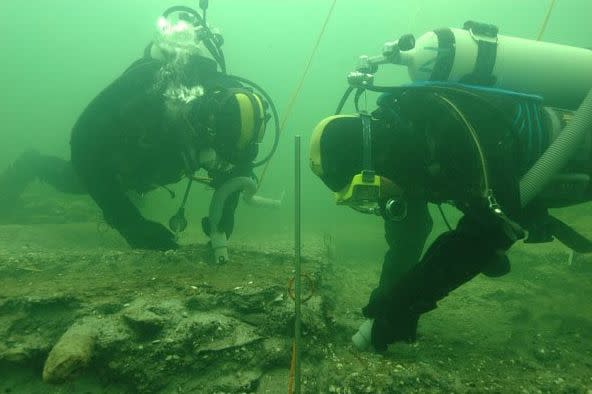‘Britain’s Atlantis’ reveals new secrets after it vanished under the sea 7,000 years ago

Doggerland – beneath the North Sea – is described as ‘Britain’s Atlantis’ – and was swamped by rising sea levels when ice melted seven millennia ago.
Researchers believe that the area between Europe and Britain was once a landscape of hills and valleys – populated by Mesolithic hunter-gatherers after the last Ice Age ended 12,000 years ago.
But now hi-tech sonar mapping is revealing its secrets, and scientists, working with wind farm companies, have recovered samples from the sea floor.
Researchers hope that cores recovered by a wind-farm developer could offer insight into the lives of the people who lived there 7,500 years ago.
The area was covered by water, erasing the lives of the Stone Age Britons who lived there – but British academics are now to uncover their story using remote sensing and ‘cores’ from the bed of the north sea.

Claire Mellett of Wessex Archaeology told LiveScience said that 10 of the cores recovered by a wind-farm developer off the coast of Norfolk contained ancient peat deposits – from marshes on land.
The researchers hope that the cores from the Norfolk Boreas site, 45 miles from the shore, could shed light on the landscape and climate of doggerland.
MORE: Teens and children had 45,000 operations to remove teeth last year
MORE: Theresa May’s Brexit plan is a deal ‘in name only’, says latest minister to quit
Mellett said, ‘The remote sensing provides us an image of the seabed, but no physical material, so when we get the cores, that gives us the actual evidence,” Mellett told Live Science.
‘We can see where the old rivers are. We can see the peat lands, and we can see the extent of them, so we know how big they are. We’re essentially reconstructing the geography of the North Sea around 10,000 years ago.’
Mellett said that the team’s ultimate goal is to produce maps of the area at different time periods, including just after the ice age.
She said, ‘We expect it will be quite a sparse landscape without many trees, a bit like Arctic Canada today.’


